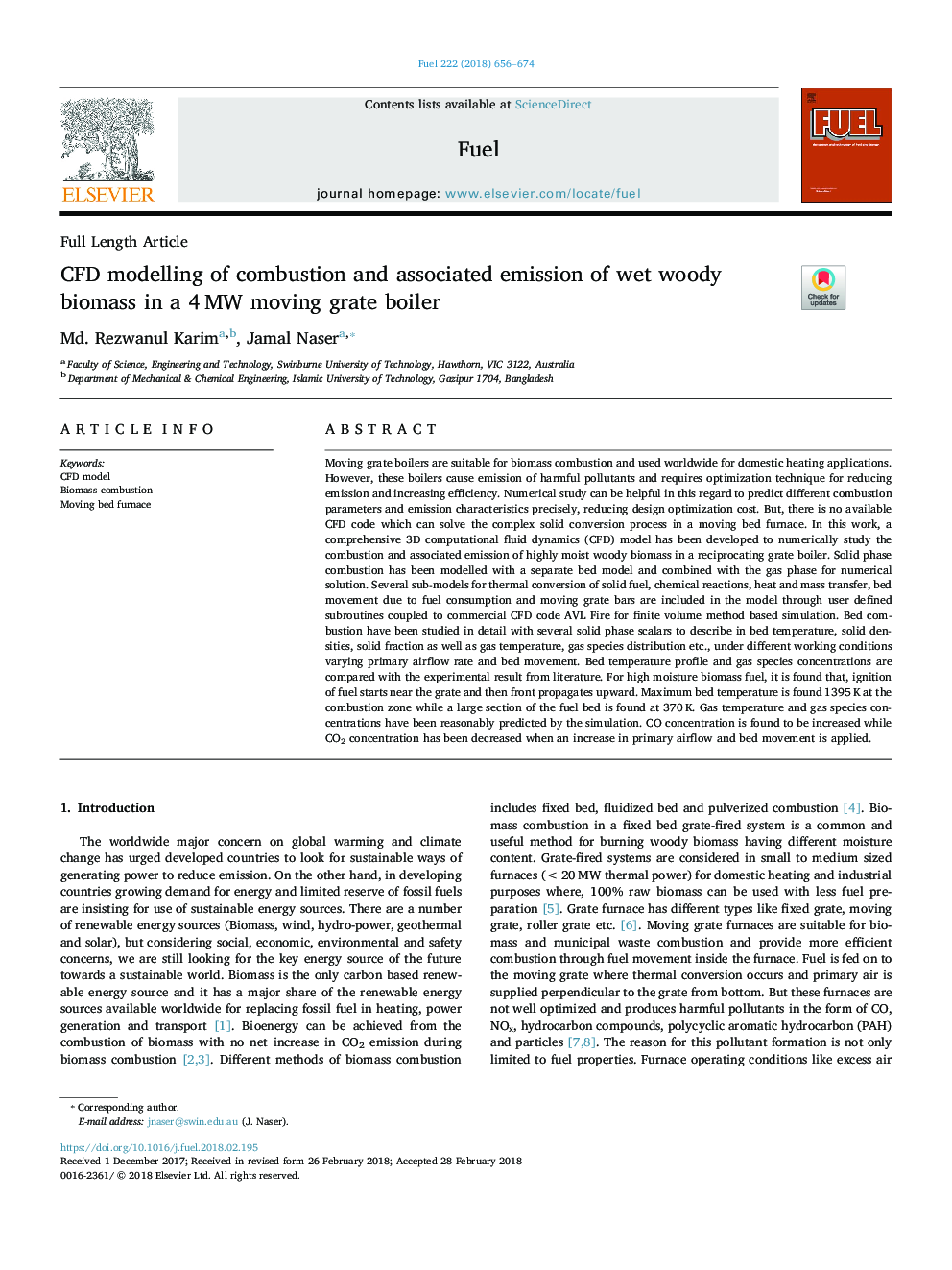| کد مقاله | کد نشریه | سال انتشار | مقاله انگلیسی | نسخه تمام متن |
|---|---|---|---|---|
| 6631438 | 1424942 | 2018 | 19 صفحه PDF | دانلود رایگان |
عنوان انگلیسی مقاله ISI
CFD modelling of combustion and associated emission of wet woody biomass in a 4â¯MW moving grate boiler
دانلود مقاله + سفارش ترجمه
دانلود مقاله ISI انگلیسی
رایگان برای ایرانیان
موضوعات مرتبط
مهندسی و علوم پایه
مهندسی شیمی
مهندسی شیمی (عمومی)
پیش نمایش صفحه اول مقاله

چکیده انگلیسی
Moving grate boilers are suitable for biomass combustion and used worldwide for domestic heating applications. However, these boilers cause emission of harmful pollutants and requires optimization technique for reducing emission and increasing efficiency. Numerical study can be helpful in this regard to predict different combustion parameters and emission characteristics precisely, reducing design optimization cost. But, there is no available CFD code which can solve the complex solid conversion process in a moving bed furnace. In this work, a comprehensive 3D computational fluid dynamics (CFD) model has been developed to numerically study the combustion and associated emission of highly moist woody biomass in a reciprocating grate boiler. Solid phase combustion has been modelled with a separate bed model and combined with the gas phase for numerical solution. Several sub-models for thermal conversion of solid fuel, chemical reactions, heat and mass transfer, bed movement due to fuel consumption and moving grate bars are included in the model through user defined subroutines coupled to commercial CFD code AVL Fire for finite volume method based simulation. Bed combustion have been studied in detail with several solid phase scalars to describe in bed temperature, solid densities, solid fraction as well as gas temperature, gas species distribution etc., under different working conditions varying primary airflow rate and bed movement. Bed temperature profile and gas species concentrations are compared with the experimental result from literature. For high moisture biomass fuel, it is found that, ignition of fuel starts near the grate and then front propagates upward. Maximum bed temperature is found 1395â¯K at the combustion zone while a large section of the fuel bed is found at 370â¯K. Gas temperature and gas species concentrations have been reasonably predicted by the simulation. CO concentration is found to be increased while CO2 concentration has been decreased when an increase in primary airflow and bed movement is applied.
ناشر
Database: Elsevier - ScienceDirect (ساینس دایرکت)
Journal: Fuel - Volume 222, 15 June 2018, Pages 656-674
Journal: Fuel - Volume 222, 15 June 2018, Pages 656-674
نویسندگان
Md. Rezwanul Karim, Jamal Naser,